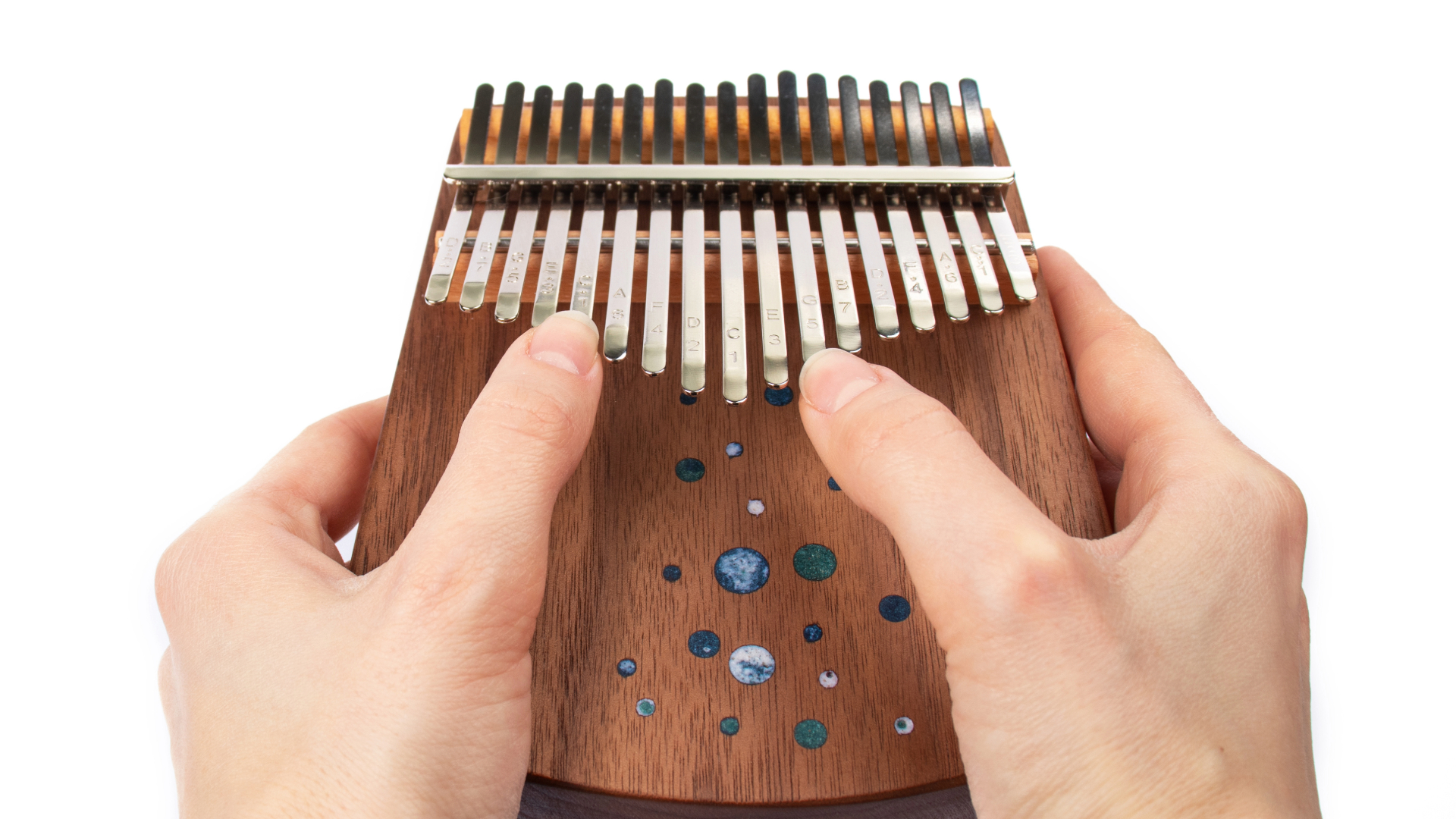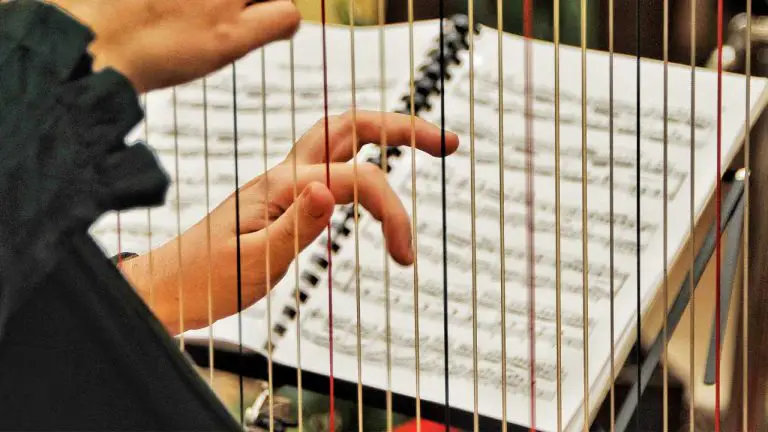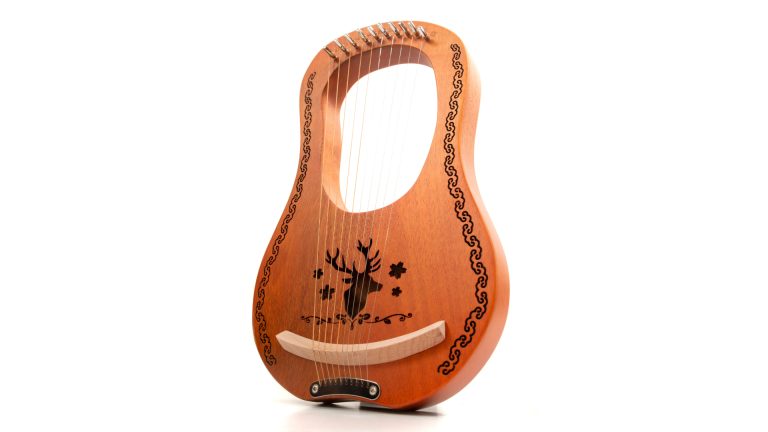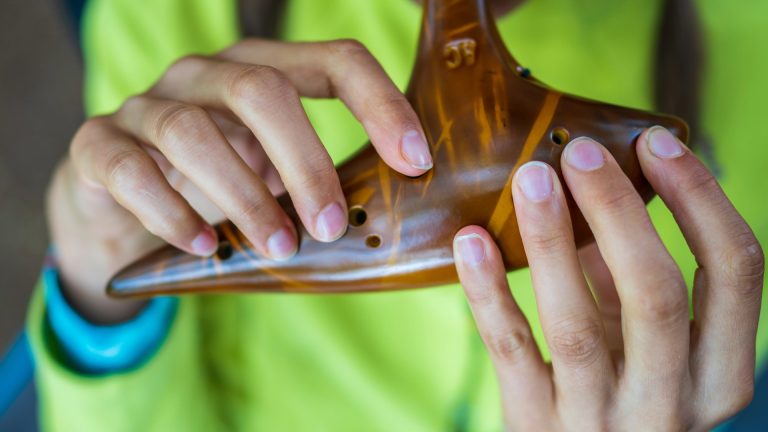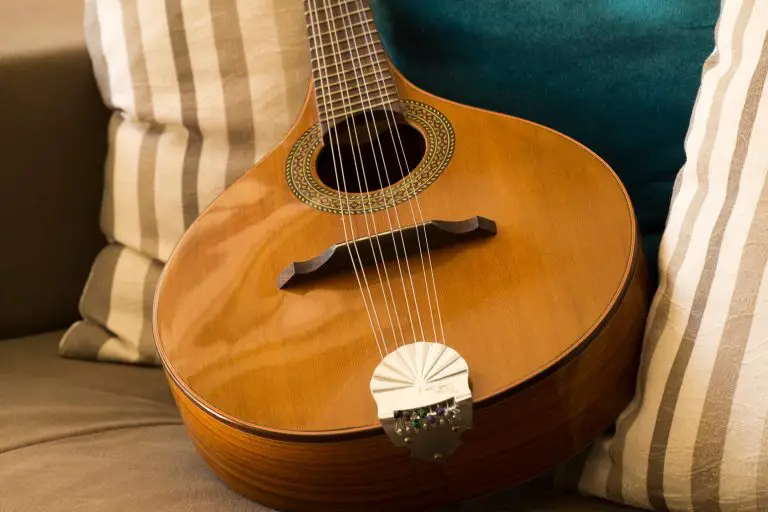What is the Best Kalimba? – Unveiling the Top Picks for 2024
Folkstrings.com is reader-supported. When you buy through links on our site, we may earn a small commission.
Discovering the best kalimba is a journey that entails understanding its rich history and diverse styles.
As a music lover, I’ve been fascinated by the sweet, melodic sounds of the kalimba, often described as a music box cradled in one’s hands.
With roots extending back to Africa, the kalimba has universally charmed musicians and listeners alike with its distinct metallic tines and wooden resonance box.

When searching for the best kalimba, one must consider various brands, models, and types. Each kalimba carries its own unique character, influenced by the materials used in its construction and the craftsmanship of its maker.
It’s essential for me to evaluate the quality of sound, durability, and the ease of playing when choosing the right kalimba.
Additionally, knowing the differences between each type, such as the traditional African mbira or the modern acrylic kalimba, helps in selecting the instrument that best suits my musical preferences and needs.
Key Points
- The kalimba’s charm lies in its melodic sound and historical significance.
- Choosing the best kalimba depends on sound quality, material, and personal preference.
- Different kalimba types offer unique experiences to musicians and enthusiasts.
Table of Contents
History and Origins

When I explore the roots of the kalimba, also known as the mbira or thumb piano, I’m diving into a rich African heritage. This traditional instrument has its origins in Africa, with the Shona people of Zimbabwe often recognized for their pivotal role in its history.
Reaching back over a thousand years, the mbira was more than a musical instrument; it was a cultural artifact, integral to ceremonies and the social fabric of communities.
At its core, the kalimba consists of a wooden board fitted with metal tines of varying lengths, which I pluck with my thumbs to create a resonant, melodic sound.
Over time, distinctive variations of thumb pianos emerged across the continent, reflecting the diversity of African music and culture.
Here’s a brief outline of its evolution:
- Origin: Associated with the Shona of Zimbabwe.
- Cultural Significance: Used in a range of social and ceremonial functions.
- Material: Traditionally, the soundboard was made from wood, with staggered metal tines attached.
- Spread: The instrument dispersed across Africa, each region adding its own cultural flavor.
The kalimba’s charm and sound profile have seen it gain popularity worldwide, and it’s now synonymous with the soothing tones that embody the spirit of African music. As for me, when I hold a kalimba, I sense a connection to a history that’s profoundly rich and beautifully complex.
Kalimba Brands and Models

When you’re starting out with the kalimba, choosing the right model can make a world of difference. I’ll walk you through some of the top picks for beginners, well-known brands, and reviews that can help guide your choice.
Three of the Best Kalimbas for Beginners Found on Amazon Separated by Bulletpoints

- Wonderful Sound: This Solid Curly Maple Thumb Piano has very nice and clear sounds, this one has a bit longer resonance so when you play it you'll feel sound is more continuous.
- Easy to play: Thumb Piano is tuned and tested well before shipment .it adopts international standard C tone
- Study Guidance: Comes with a professionally produced kalimba learning booklet, it introduces the use and performance method of kalimba in detail.
- After-sales Service: 365 days warranty, 45 days unconditional return guarantee. If you have any questions or demanding advice on musical instruments, please feel free to contact us.

- Selected acacia koa wood and ore metal tines to make sure the kalimba produces a warm and deep sound.
- High-gloss piano lacquer finishing.
- Music scales engraved on the keys for easy starting, tremolo chain included to provide an interesting jingle effect, professional PU Leather Hard Case included for protecting, easy carrying and storage.

- Very easy to learn: The Unokki 17 Key Kalimba is perfect for both adults and kids. It has simple instructions provided, so you can easily begin playing and enjoying the kalimba right away.
- Quality: The Unokki kalimba is crafted from premium materials that ensure exceptional quality and durability. The body of the instrument is made of solid mahogany wood, while the 17 keys are constructed from first-quality ore steel.
- Crafted Notes: The names of the notes are engraved on the keys, making it easier for beginners to learn and master playing. The curved keys prevent discomfort and pain in the thumbs during extended playing periods, while the included thumb covers offer added protection. Additionally, the product comes with an instruction book that includes songs to jumpstart your musical journey.
- Gecko Kalimba: Gecko is a trustworthy brand for beginners. Their kalimbas usually come with solid koa wood construction, offering a resonant and warm sound that’s quite forgiving for new players. The Gecko kalimba is budget-friendly, typically including extras like a tuning hammer, instruction book, and carrying case, which make it a complete starter package.
- Moozica K17K: This Moozica Kalimba is crafted from solid acacia koa wood and offers a bright and clear tone that can please even the seasoned musicians. It’s a bit pricier but worth it for the sound quality. Additionally, it features a unique ergonomic design, making it comfortable to hold and play for extended periods—ideal for practice sessions.
- UNOKKI Kalimba: The UNOKKI kalimba is another fantastic option with a great price range for beginners. It’s lightweight and comes with everything a newbie might need, including stickers to learn the notes, a user guide, and online lessons. Its clear sound and ease of play make it a popular choice among new kalimba players.
How Do You Choose the Best Kalimba?
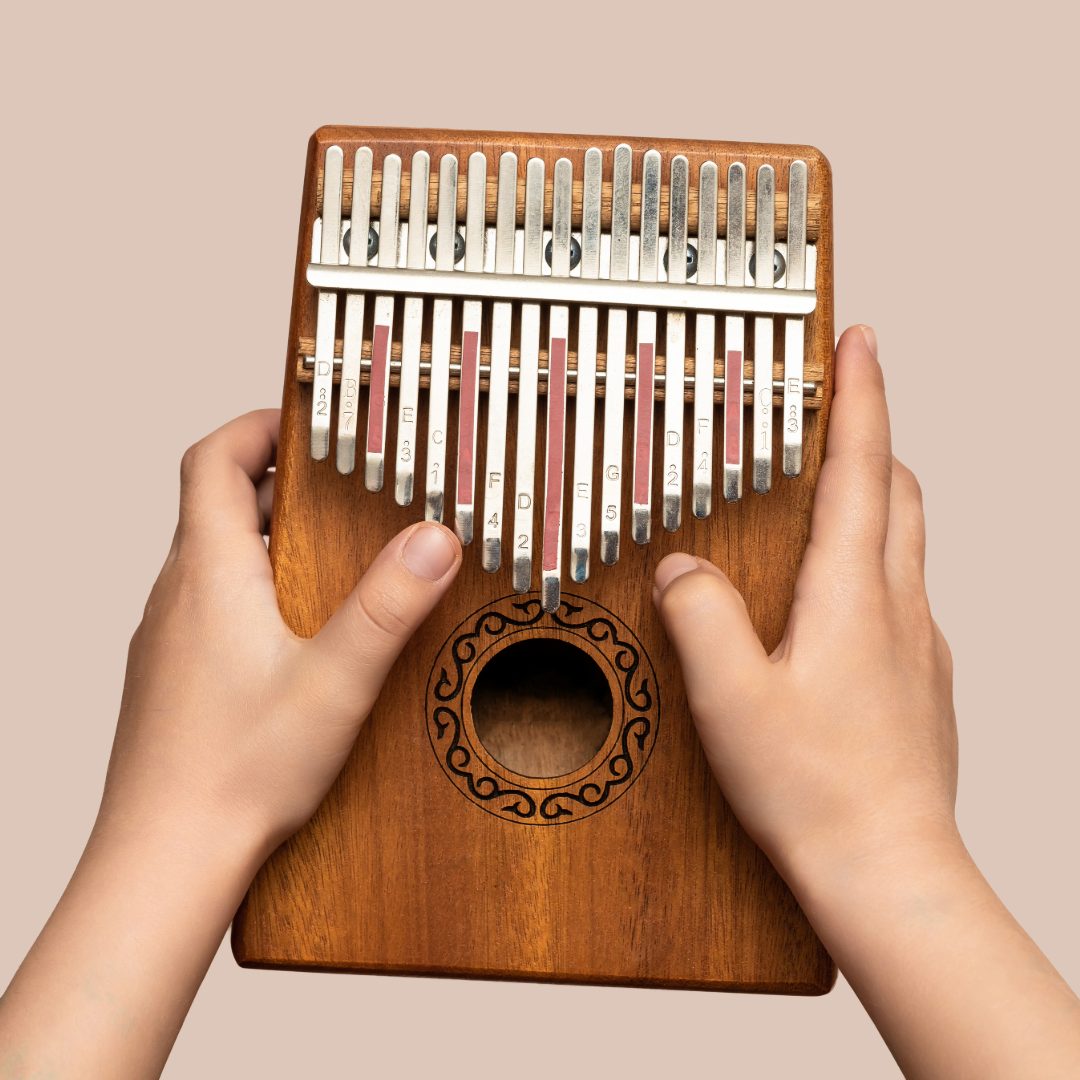
When I’m looking for the best kalimba, I focus on specific features and considerations that align with my skill level and personal needs. It’s crucial to understand these before making a decision.
Considerations for Beginners
If you’re new to the kalimba, start with simplicity. A kalimba with fewer tines (keys) is easier to learn on. Look for one with clear note markings, as this helps with learning and playing songs. The kalimbas suggested above have those features.
Your budget is important too; beginners might opt for a less expensive model to begin their journey without sacrificing quality. It’s a balance between affordability and the right features for a beginner.
Features to Look For
When buying a kalimba, sound quality is paramount. Here’s what to focus on:
- Material: High-quality wood or acrylic creates a resonant and warm sound.
- Tines: Hardened steel tines maintain their tuning and provide a clear tone.
- Tuning: A kalimba that holds its tuning over time saves frustration.
Additionally, consider the following:
- Size and Portability: I prefer a kalimba that’s easy to hold and take with me.
- Accessories: Some kalimbas come with cases, tuning hammers, and note stickers.
A comprehensive features table for a quick comparison:
| Feature | Importance for Beginners | Importance for Experienced Players |
|---|---|---|
| Number of Tines | High (less is better) | Moderate to High |
| Note Markings | High | Moderate |
| Material Quality | Moderate to High | High |
| Tine Material | High | High |
| Tuning Stability | High | High |
| Size & Portability | Moderate | Moderate |
| Included Accessories | Moderate | Low to Moderate |
The best kalimba for you ultimately depends on these factors tailored to your personal preferences and where you are on your kalimba-playing journey.
Kalimba Types and Materials
When I explore the enchanting world of kalimbas, I find that the type and the material of construction play crucial roles in the sound and quality of these instruments.
Types of Kalimbas
The kalimba, often known as a thumb piano, comes in various types, each with a unique number of keys and tuning that resonates with different music styles and players’ capabilities. 17-key kalimbas are widely popular due to their range and versatility, making them suitable for beginners and advanced players alike.
There’s also the 8-key kalimba, which is a more compact and limited instrument, ideal for simple tunes or those just starting. Beyond these, chromatic kalimbas are available, containing both natural and sharp or flat notes, allowing for a wider sonic palette and the ability to play in any key.
Materials and Sound Quality
The materials used in crafting a kalimba significantly affect its sound. Mahogany wood is often praised for its warm tone and sustainability, providing rich sound quality that many seek.
Also, koa wood is a premium choice known for its beautiful grain and clear, crisp tones. It’s less common but highly regarded by seasoned players.
The tines, or keys, are commonly made from ore steel; it’s durable and provides a clear, bell-like sound. Some kalimbas will feature a hollowed-out body, like those from the Lala tribe in Northern Rhodesia (now Zambia), enhancing the resonance and depth of the sound.
In my experience, when selecting a kalimba, I consider both the type and material to ensure the best sound quality and playing experience for my musical journey.
Playing the Kalimba
When I first picked up the kalimba, I quickly realized that its enchanting sound is matched by the ease of learning and the simplicity of maintenance. My experience has shown me that with just a little bit of patience and care, anyone can enjoy playing this instrument.
Learning the Basics
Starting off, I made sure my thumbs and fingers were comfortable. Some kalimbas come with finger protectors, which I found helpful to avoid soreness after long practice sessions.
The first thing I mastered was the basic playing technique, using alternating thumb movements to produce a melody. Most kalimbas are tuned to a specific scale with the tines arranged in a way that makes learning to play songs relatively intuitive.
An important tip I learned early on was to start with simple songs and progress to more complex tunes, which reinforces muscle memory and builds confidence.
Tuning and Maintenance
To keep my kalimba sounding perfect, tuning is essential. I use a tuning hammer and a digital tuner to adjust each tine to the correct note. Tuning usually involves a gentle tap on the end of a tine to raise or lower its pitch.
I ensure the kalimba is in tune every few weeks or whenever it starts to sound off.
For maintenance, I regularly wipe down the instrument with a cleaning cloth to remove fingerprints and dust. This small ritual helps maintain both the kalimba’s beautiful look and its clear sound.
Regular maintenance has kept my kalimba sounding as good as new, ready for whenever inspiration strikes.
Frequently Asked Questions
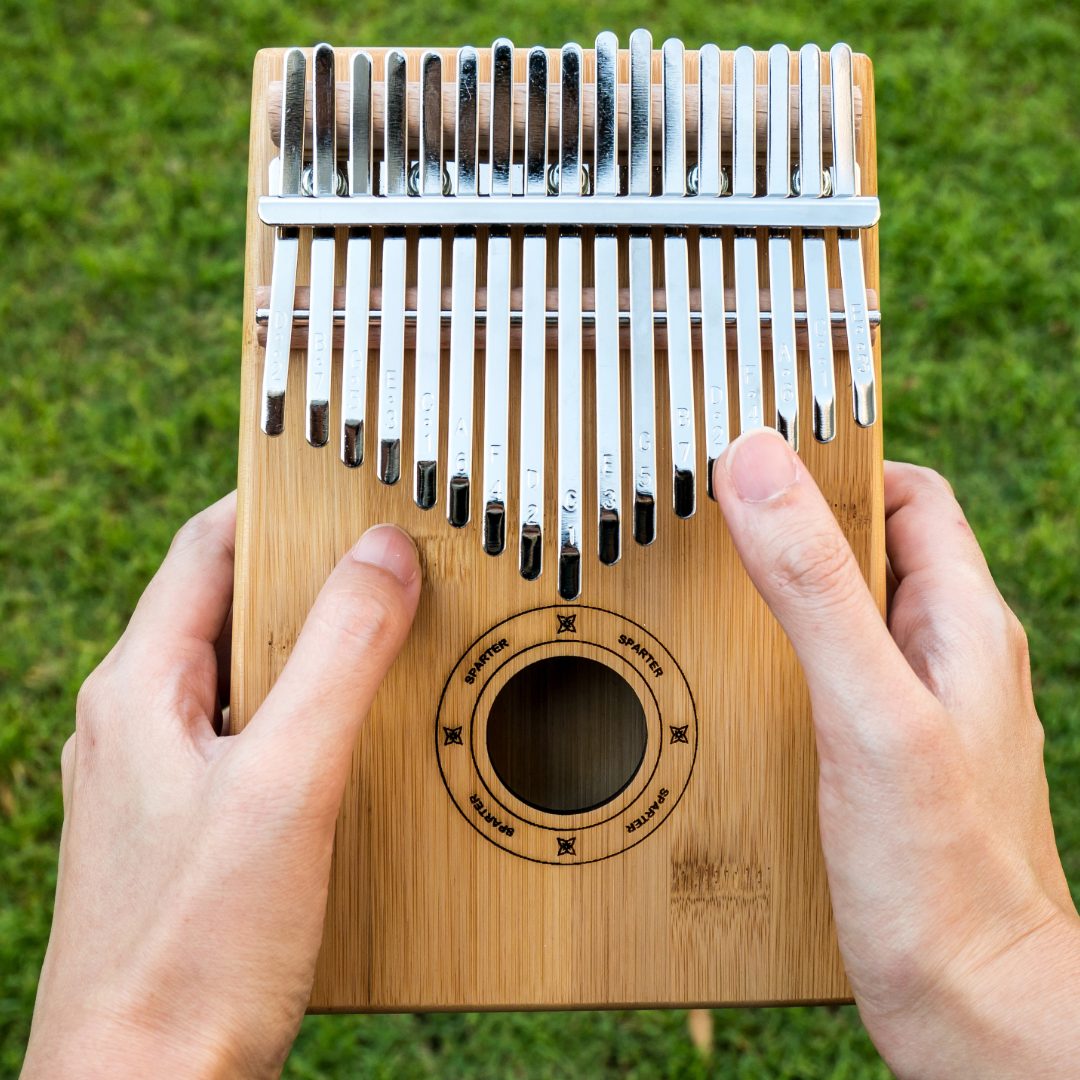
When you dive into the world of kalimbas, you’ll find a spectrum of choices. I’m here to help you navigate those, ensuring beginners to advanced players find the best fit for their needs.
How can I choose the right kalimba for a beginner?
For beginners, I recommend a kalimba with clear, engraved note markings on the keys.
A 17-key kalimba in the key of C is standard and user-friendly, offering a full range of notes with a manageable number of tines.
Are there significant differences between 8, 17, and 21 key kalimbas?
Yes, the 8-key kalimba has a more limited range, suitable for simple tunes.
The 17-key is the most common, offering a wider repertoire.
A 21-key kalimba expands the range further, ideal for more complex music but may be overwhelming for beginners.
What are the distinguishing features of a high-quality kalimba?
A high-quality kalimba will have well-tuned tines that produce clear tones, a solid wood construction for lasting resonance, and a smooth finish to prevent splinters.
High-quality instruments maintain their tuning longer and are generally more pleasing to play.
Which brands are considered top-tier for kalimbas?
Brands like Gecko, Hugh Tracey, and Aklot are often praised for their craftsmanship.
Gecko and Hugh Tracey, in particular, are known for exceptional build quality, excellent tonal characteristics, and durability.
Can you recommend a particular type of kalimba for more advanced players?
Advanced players might enjoy kalimbas with additional features such as built-in pickups for amplification or alternative tunings for versatility.
I find that a flatboard kalimba with a solid wood body provides rich sound and is comfortable for longer play sessions.
What should I look for when selecting a kalimba for a child?
For a child, look for a lightweight kalimba with rounded tines and a durable build.
It should be small enough for their hands and have note markings to facilitate learning.
Safety features, like lack of sharp edges, are also crucial for a child’s instrument.
Author Profile
-
Daniel Johnstone is an English writer with a love for stringed instruments from around the world.
He shares his love for these instruments through his writing for folkstrings.com, a website dedicated to all things related to folk string music.
Daniel's passion for music started at a young age, and he has since become an accomplished musician, playing guitar, cavaco, and recently, the harp.
His dedication to learning and sharing his knowledge of stringed instruments is evident in his insightful and engaging blog posts. Whether you're a seasoned musician or a beginner, Daniel's writing is sure to inspire and entertain you.
When he's not playing music or writing, you can find Daniel exploring new instruments and seeking out new sounds to share with his readers.
Latest entries
 OcarinaApril 1, 2024Why Does My Ocarina Sound Bad? Tips for Improved Tone Quality
OcarinaApril 1, 2024Why Does My Ocarina Sound Bad? Tips for Improved Tone Quality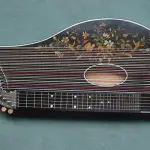 ZitherMarch 30, 2024Who Are Some Famous Zither Instrument Players? Let’s Find Out!
ZitherMarch 30, 2024Who Are Some Famous Zither Instrument Players? Let’s Find Out! ZitherMarch 30, 2024Should I Learn the Zither? Exploring the Benefits of This Unique Instrument
ZitherMarch 30, 2024Should I Learn the Zither? Exploring the Benefits of This Unique Instrument ZitherMarch 30, 2024What is the History of the Zither: Tracing the Strings Through Time
ZitherMarch 30, 2024What is the History of the Zither: Tracing the Strings Through Time
Affiliates:
This post may contain affiliate links that at no additional cost to you, the site may earn a small commission. We only recommend products we would use ourselves and all opinions expressed on this site are our own.
Accuracy Advice:
While we strive to provide up-to-date and accurate information, the content in this article may not reflect the most current research or medical guidelines. We encourage readers to do further research and consult with professionals for more personalized advice.
Our Recommendations:
The products and services mentioned in any of our articles are recommended based on our independent research and personal experience. We are not sponsored by any company. We aim to suggest products and services we believe are of high quality and could be beneficial to our readers.

